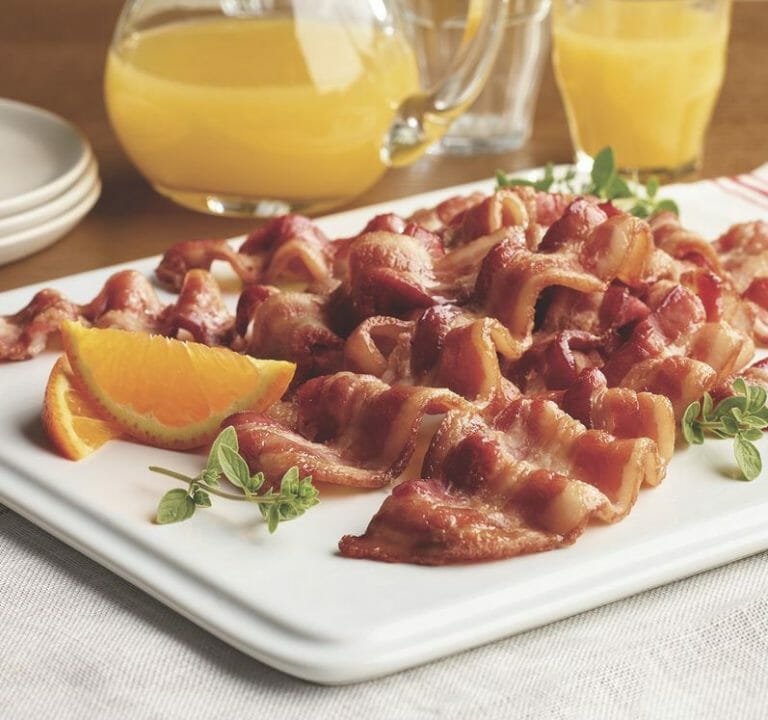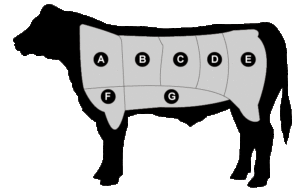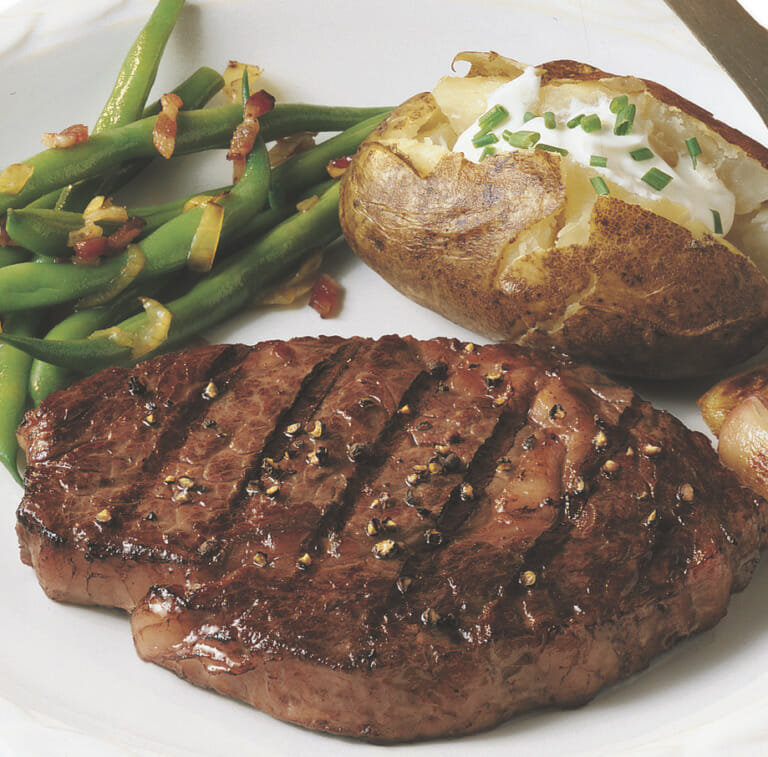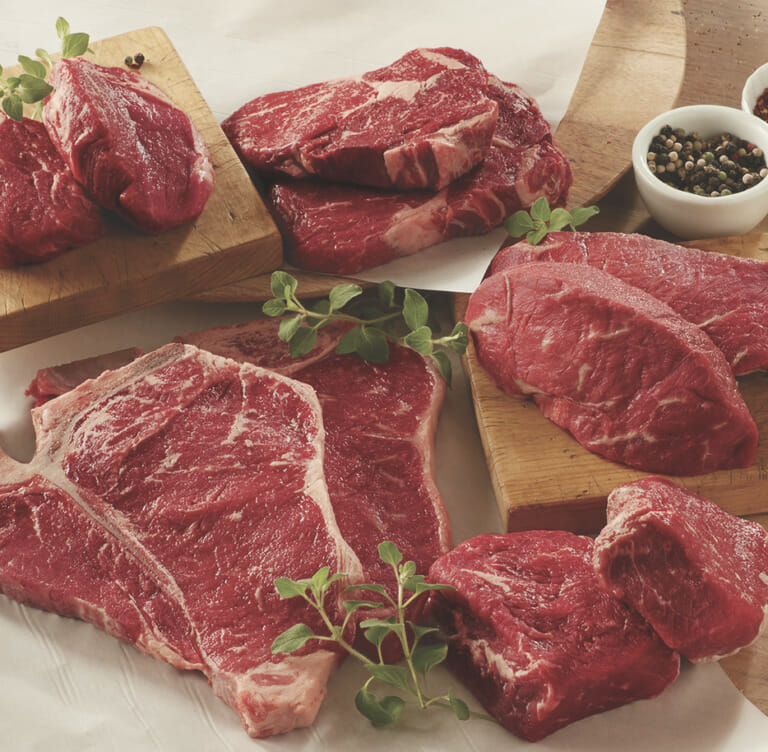Bacon in the Oven and More: A Complete Guide
From bacon in the oven to bacon-wrapped chicken, we explore bacon recipes and the history of bacon in this handy compendium devoted to America’s favorite pork product.

Few food trends have taken America by storm as bacon has…but it wasn’t always this way. What for many years was a humble, everyday breakfast food staple became a pariah in the fat-phobic 1980s, when the price of pork bellies fell so low that the U.S. was literally giving them away to poorer nations.
Then something happened. Maybe it was the carb-averse diet plans overthrowing the tasteless fat-free diets with promises of unlimited meat, or a well-known television chef extolling the unctuous virtues of pork fat, but over the last decade, bacon grew to annual sales of over $4 billion. Today our bacon-crazed nation is awash in bacon-laden burgers, bacon ice cream, bacon lip balm, bacon vodka, and bacon-sriracha lollipops. Inevitably, trend-savvy foodies weary of bacon’s omnipresence and ready to move on have blogged and tweeted and otherwise posed the question: Is Bacon Dead?
The answer, says society, is an incredulous “how could you say that?”
The Birth of Bacon: Its History and Origins
Bacon is older than many religions. The Chinese were curing pork bellies with salt as early as 1500 B.C.E., and the Roman Empire had an early version of bacon called petaso which was boiled with dried figs, browned and served with wine (remember that for later). The word “bacon” comes from the Middle English bacoun, with roots in the Old High German bahho, referring to the back, and could refer to any cut of pork.
It is said that the popular phrase “bring home the bacon” originated in the 12th century. Supposedly, the church in the English town of Dunmow promised to reward a side of bacon to any married man who swore before God and the congregation that he would not quarrel with his wife for a year and a day. In this less-enlightened society, it was assumed any man who could put up with a woman’s demands without arguing was a master of diplomacy, and was highly esteemed by his community.
Now, if you’re bringing home the bacon, let’s make sure it’s the kind you want:
Types of Bacon
There are many different types of bacon in the world, mostly distinguished by the primal cut from which they are made or the method of processing:
Side bacon (known in the U.K. as streaky bacon): By far the most common form of bacon in the United States, this cut comes from pork belly and is almost always smoked over hardwood. (Some artisanal bacon companies use different woods to impart different flavors.) The streaks come from the layers of fat and muscle in the belly. When the bacon is cooked, the fat is melted, or rendered, leaving mostly the lean portion. The fat is often saved for use in cooking future dishes. Unsliced side bacon is called slab bacon. Italian bacon, or pancetta, is side bacon that has been cured in salt and spices but not smoked. It is either cubed for cooking, or sliced thinly and served as a cold cut.
Back bacon (known in the U.S. as Canadian bacon) comes from the loin on the top (back) of the pig. It is very lean and meaty, and actually more like ham. Most bacon sold in the U.K. is back bacon; Irish bacon is back bacon with a layer of fat left on the outside.
Cottage bacon is sliced thinly from the shoulder. As such, it is also very meaty, and is typically oval-shaped.
Jowl bacon is simply pork cheeks that have been cured and smoked. The Italian version, guanciale, is unsmoked and prepared in much the same way as pancetta.

Bakin’ Bacon: How to Cook Bacon in the Oven and Other Recipes
So now you’ve got that bacon (let’s assume it’s side bacon, as that’s what all the buzz is about these days). What do you want to do with it?
In the summer when tomatoes are at their peak, there’s nothing like a good old BLT. No recipe should be needed…but try substituting a more nutritious lettuce (like a spring mix including arugula) for the usual iceberg, use a flavorful heirloom tomato from the farmer’s market, and flavor your mayonnaise with garlic or sriracha sauce.
Spaghetti alla carbonara is pasta with bacon and eggs—how cool is that? Traditionally in Italy it’s made with pancetta or guanciale, but the smoky kick of American-style bacon is a wonderful addition. For best results, use a good slab bacon finely diced.
The Food Network has a LOT of ideas for cooking with bacon…but one thing many people want to know is how to cook bacon in the oven. Not only does frying bacon in the skillet expose you and your stovetop to splatter, it usually results in curled-up or twisted strips of bacon. Cooking bacon in the oven gives you straighter, flatter strips perfect for sandwiches. Here’s how to do it right:
Baking Bacon
- Arrange bacon strips on a broiler pan (the kind with the slotted top that came with your oven). This allows the fat to run through the slots into the catch pan below, resulting in less greasy bacon and allowing us to collect those yummy bacon drippings for frying things. If you don’t have a broiler pan, line a baking sheet with foil. (Martha Stewart likes parchment, but foil lets us collect the drippings.)
- Do not preheat the oven; warming up is part of the process. Place the pan on the center rack, close the oven door, and turn the heat to 400 degrees.
- Check it in 10 minutes. The bacon should be nicely browned in 15 to 20 minutes, depending on how thickly it’s sliced, but some people like it a little crispier than others.
- Remove the bacon from the hot pan to a platter right away (to keep it from cooking further). If you used a foil-lined pan, line the platter with paper towels to soak up the grease.
- Pour the bacon fat from the catch pan or foil into a container for future use. You’ll notice it’s much clearer and more particle-free than the skillet-cooked bacon fat. Bonus!
Pairing Wine with Bacon…Seriously?
Yes. Just as everything’s better with bacon, much the same can be said for wine. Now, to be honest, bacon is generally not the main attraction (except at breakfast…but we’re not going there); rather, it’s used to enhance various dishes.
If you’re having, say, bacon-wrapped filet mignon, go with a filet-friendly red like syrah/shiraz or a zinfandel. A lighter red like pinot noir (Burgundy) has a little more acidity to cut through the fat, and many pinots have smoky notes that complement the bacon.
Bacon-wrapped chicken breast calls for a lighter touch, but can handle a white or a red. Pinot noir shines here, too, as does the white version of Burgundy: chardonnay. Chablis (the zestier, more acidic chardonnay) is a better choice than the more buttery variety.
And with bacon-wrapped pork chops, the same rules apply—light reds, zesty whites—but here we’d swap the Chablis for an off-dry German riesling or spicy Alsatian gewürztraminer.
Of course, a bright, sparkling Champagne or prosecco is a great way to cut through bacon’s luscious fat and, mixed with orange juice in a refreshing mimosa, is a lovely addition to a breakfast or lunch buffet. (OK, we did go there.)



